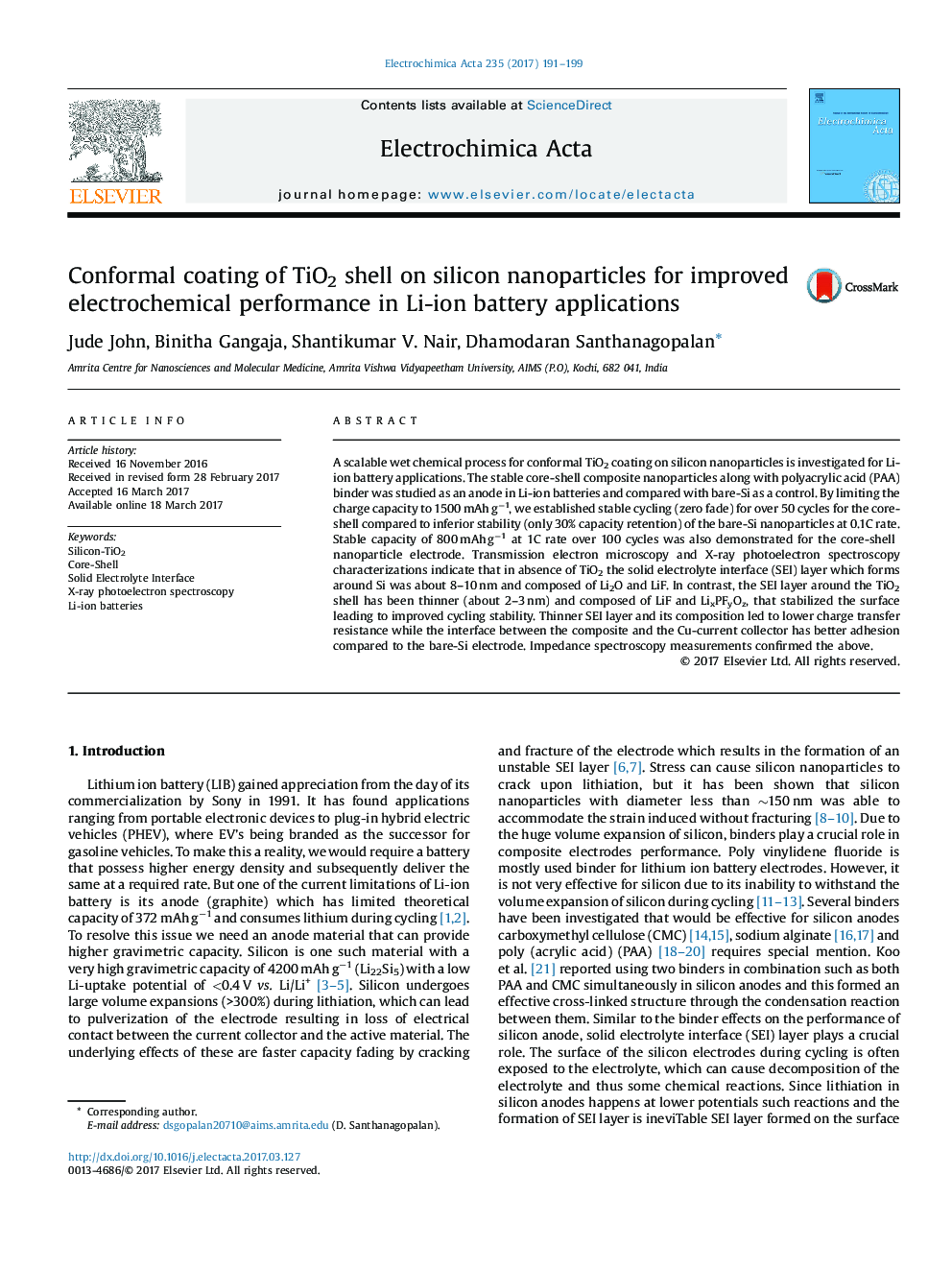| کد مقاله | کد نشریه | سال انتشار | مقاله انگلیسی | نسخه تمام متن |
|---|---|---|---|---|
| 6471561 | 1424122 | 2017 | 9 صفحه PDF | دانلود رایگان |

- A facile wet chemical process for TiO2 coating on Si nanoparticles is established.
- Charge capacity limited to 1500 mAh gâ1 of Si-TiO2 exhibit zero-fade for 50 cycles.
- Charge capacity limited to 800 mAh gâ1 of Si-TiO2 exhibit zero-fade for 100 cycles.
- Ex situ TEM and XPS data of cycled electrodes confirm stable 2.
- Versatile surface coating method can be extended to other Li-ion battery materials.
A scalable wet chemical process for conformal TiO2 coating on silicon nanoparticles is investigated for Li-ion battery applications. The stable core-shell composite nanoparticles along with polyacrylic acid (PAA) binder was studied as an anode in Li-ion batteries and compared with bare-Si as a control. By limiting the charge capacity to 1500 mAh gâ1, we established stable cycling (zero fade) for over 50 cycles for the core-shell compared to inferior stability (only 30% capacity retention) of the bare-Si nanoparticles at 0.1C rate. Stable capacity of 800 mAh gâ1 at 1C rate over 100 cycles was also demonstrated for the core-shell nanoparticle electrode. Transmission electron microscopy and X-ray photoelectron spectroscopy characterizations indicate that in absence of TiO2 the solid electrolyte interface (SEI) layer which forms around Si was about 8-10 nm and composed of Li2O and LiF. In contrast, the SEI layer around the TiO2 shell has been thinner (about 2-3 nm) and composed of LiF and LixPFyOz, that stabilized the surface leading to improved cycling stability. Thinner SEI layer and its composition led to lower charge transfer resistance while the interface between the composite and the Cu-current collector has better adhesion compared to the bare-Si electrode. Impedance spectroscopy measurements confirmed the above.
209
Journal: Electrochimica Acta - Volume 235, 1 May 2017, Pages 191-199